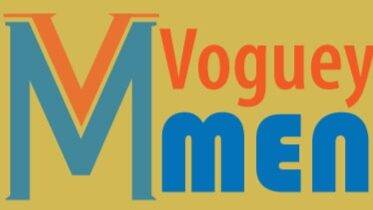We are preparing for a trip down memory lane to a truly groovy era! The 1960s – what a wild, vibrant ride it was. More than just a time of peace, love, and rock ‘n’ roll, it was a decade when men’s fashion truly broke free, exploring uncharted territories with passion and flair. Forget the stiff conformity of yesteryear; this was about individual expression, about looking as far out as your ideas. From the chart-topping superstars and trailblazing athletes to the revolutionary authors and cinematic legends, the men of the Sixties didn’t just strive to create masterpieces or achieve new milestones; they understood that looking good, dressing sharp, and pushing stylistic boundaries was part of the whole scene. In this thrilling quest for sartorial excellence, new frontiers were indeed explored, challenging norms and setting trends that echo even today. In this tribute to style and swagger, we’re digging into the wardrobes of 25 of the most legendary dudes, , the cool cats of the decade—men who helped fashion swing, swirl, and sparkle its way into history, our 25 Fashion Icons of the 60s, unforgettable tastemakers of the swinging Sixties!
1. The Beatles – The Band That Dressed a Generation

The Beatles didn’t just change music—they rewired the fashion DNA of the 1960s. From the sharp, collarless Pierre Cardin suits and Cuban heels of A Hard Day’s Night to the psychedelic regalia of Sgt. Pepper’s Lonely Hearts Club Band, their style evolved as wildly as their sound. They popularized mop-top haircuts, mod tailoring, Indian kurtas, and velvet jackets without blinking. Each Beatle had his own sartorial personality: McCartney polished, Lennon avant-garde, Harrison spiritual, Ringo cheeky. Their look defined swinging London and inspired teens from Tokyo to Toronto. Every fashion shift of the decade? The Beatles were already there.
2. Steve McQueen – The Undisputed King of Cool
Steve McQueen didn’t need loud outfits to make a statement—his style whispered confidence. In the 1960s, hits like The Great Escape (1963), Bullitt (1968), and The Thomas Crown Affair (1968) cemented him as Hollywood’s most magnetic man. But off-screen, he was just as compelling—favoring rugged basics like Harrington jackets, slim chinos, turtlenecks, and Persol 714 sunglasses. He brought together rebel and gentleman in one impossibly cool package. McQueen didn’t follow trends—he made everyday clothes iconic. His laid-back masculinity still sets the bar for effortless menswear.
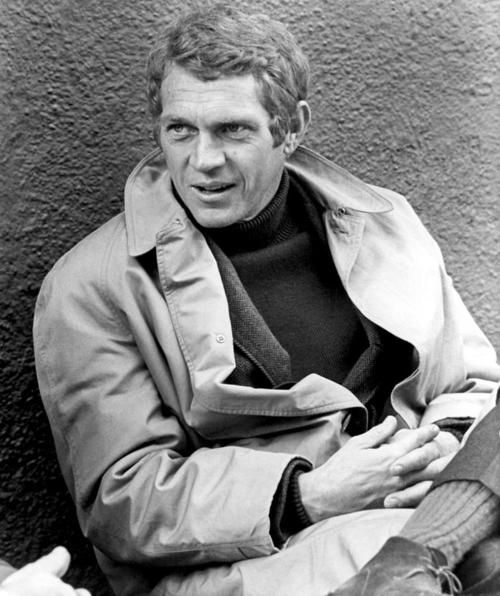
3. Sean Connery – The Man Who Suited Up and Shook the World
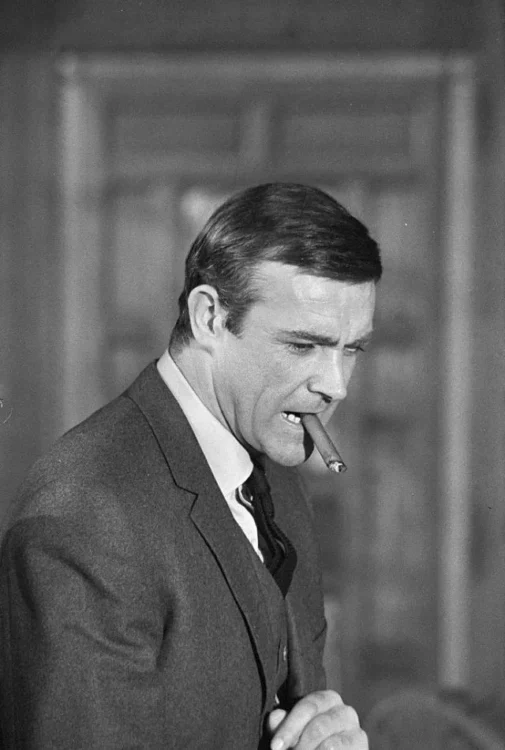
When Sean Connery stepped onto the screen as James Bond in Dr. No (1962), men everywhere redefined their style goals. Tailored by Anthony Sinclair, his sharp suits, silky shawl-collared tuxedos, and minimalist shirts became the standard for suave masculinity. He made cocktail attire look lethal and sportswear aristocratic. But Connery also brought rugged charm to roles like Marnie (1964) and The Hill (1965). Off-duty, he favored knit polos, slacks, and Scottish cool. Bond’s look had power, precision, and class—and Connery wore it like second skin. Image source
4. Jimi Hendrix – The Psychedelic Style Revolutionary
Jimi Hendrix didn’t just blow minds with his guitar—he lit up fashion with the same fire. From Monterey Pop to Woodstock, Hendrix took to the stage like a sartorial meteor: velvet jackets, lace-up shirts, Afghan coats, paisley scarves, and military frogging. Albums like Are You Experienced (1967) and Electric Ladyland (1968) changed rock, while his look changed what men thought fashion could be. Hendrix mixed boho, glam, and Afro-futurism like no one before him. He didn’t just break fashion rules—he set them ablaze. image source
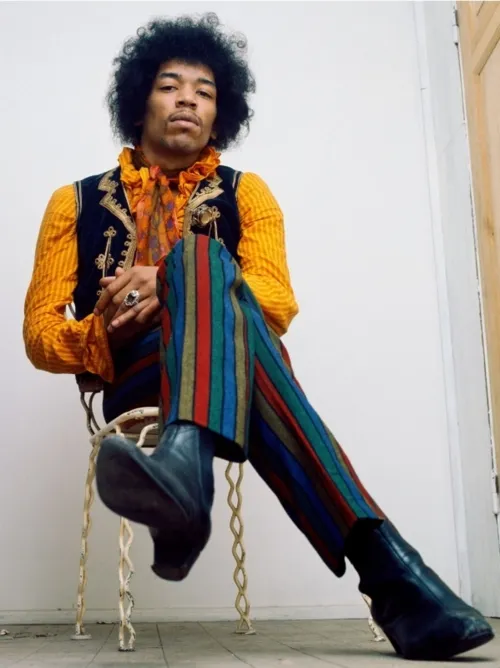
5. Paul Newman – The Blueprint for American Cool
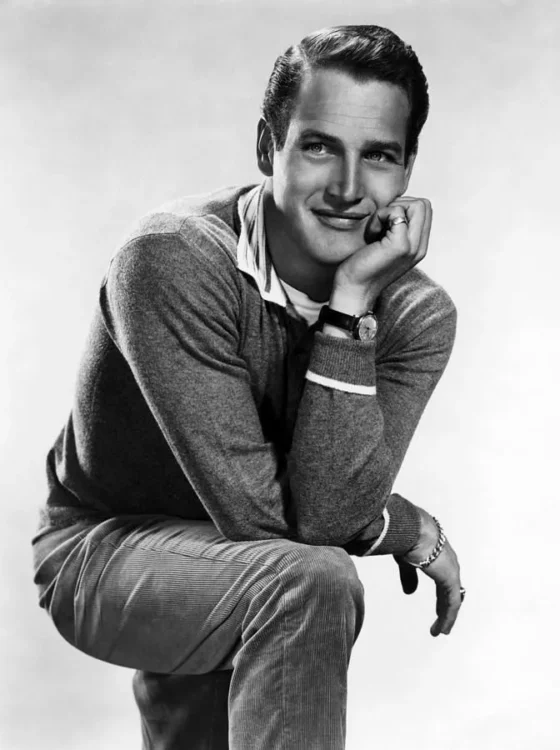
Paul Newman was the guy every man wanted to be—smart, soulful, and devastatingly stylish. With roles in The Hustler (1961), Hud (1963), and Cool Hand Luke (1967), he brought a quiet intensity to the screen. Off-screen, his look was pure American classic: white tees, denim, casual button-downs, and the occasional racing jacket. He didn’t try hard, and that was the point. Newman’s style was democratic—clean, confident, timeless. He gave us the original “less is more” blueprint for men’s style that still resonates today.
6. Muhammad Ali – Style That Flew Like a Butterfly
Ali didn’t just dominate the ring—he owned every room he walked into. After his 1964 upset of Sonny Liston, Ali became a world icon, defending his title with flair and fire. His verbal jabs were legendary, but his wardrobe packed its own punch: colorful suits, silk shirts, bow ties, fur coats, and those unmistakable shades. Ali’s look was elegant, defiant, and proudly Black at a time when that alone was revolutionary. Like his footwork, his fashion was fluid, fast, and impossible to ignore. He dressed like he knew he was the greatest—because he was.
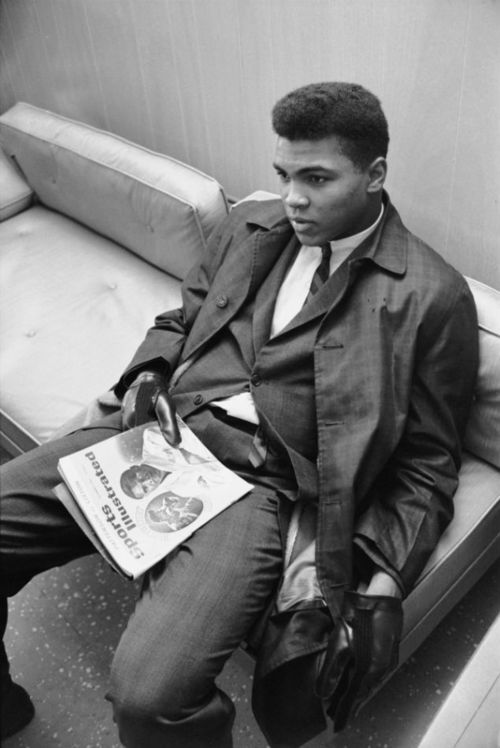
7. John F. Kennedy – The President of Prep
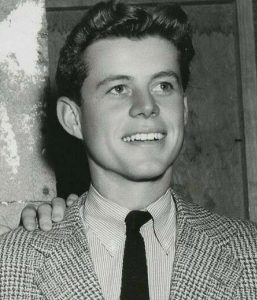
JFK didn’t just lead America into the New Frontier—he brought polish and charm to the White House wardrobe. From the tailored navy suits worn during the Cuban Missile Crisis to relaxed Nantucket weekends in khakis and boat shoes, Kennedy balanced statesmanship with youthful style. His preference for slimmer silhouettes, narrow ties, and effortless accessories like tortoiseshell sunglasses made East Coast prep feel fresh. While his presidency ended tragically in 1963, his style influence never did. JFK made smart look sexy—and leadership look like a lifestyle.
8. Bob Dylan – The Thinking Man’s Rock Star Look
In a world of peacocks and pop icons, Bob Dylan stayed lean, dark, and mysterious. With groundbreaking albums like The Times They Are A-Changin’ (1964) and Blonde on Blonde (1966), he defined the voice of a generation. His fashion echoed his music—beatnik shades, skinny suits, tousled hair, and poetic cool. Dylan didn’t scream style; he murmured it with a harmonica in one hand and a cigarette in the other. He made dishevelment feel deliberate. From indie rockers to folk revivalists, Dylan’s look remains a masterclass in quiet rebellion.
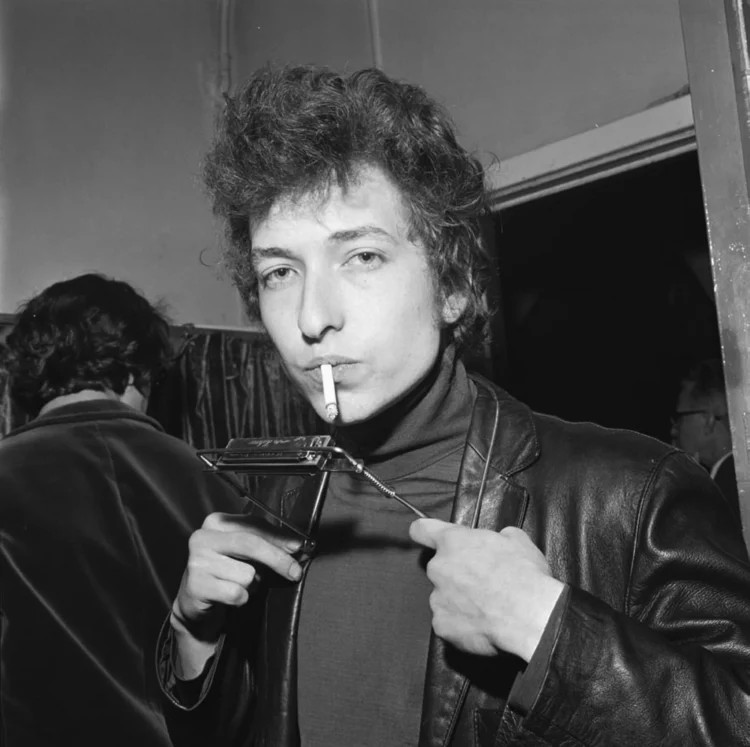
9. Gianni Agnelli – The Gentleman Rebel of Italian Style
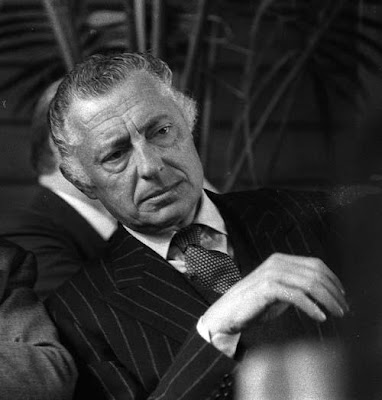
Gianni Agnelli was more than a Fiat magnate—he was Italy’s answer to Bond, with a dash of Riviera mischief. In the 1960s, as he expanded Italy’s automotive empire, he also redefined menswear. Double-breasted blazers, unbuttoned collars, luxe knits, and those infamous wristwatches worn over shirt cuffs became his trademarks. He made tailoring playful, elegance instinctive, and rule-breaking refined. Whether skiing in St. Moritz or lounging in Capri, Agnelli was never out of place—and never overdressed. He turned sprezzatura into an international fashion religion.
10. Michael Caine – Mod Sharpness Meets Working-Class Cool
Michael Caine brought Cockney swagger to the screen and mod polish to the wardrobe. With breakout roles in Zulu (1964), The Ipcress File (1965), and Alfie (1966), he became the voice of post-war, working-class ambition. His style was sharp: slim suits, Chelsea boots, rollnecks, and those signature thick-rimmed glasses. Caine made fashion accessible—no aristocratic airs, just solid taste and sharp cuts. He proved you didn’t need a Savile Row budget to dress like a man of style. Cool, clever, and crisply tailored—that was Caine in his prime.
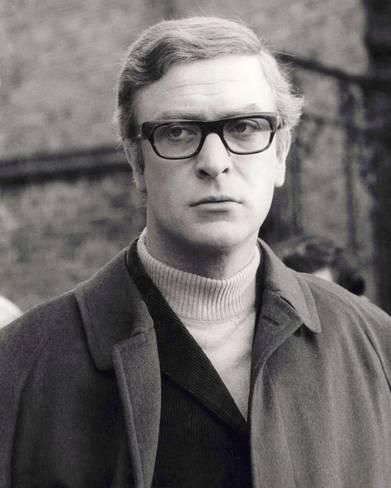
11. Alain Delon – The Face of French Cool
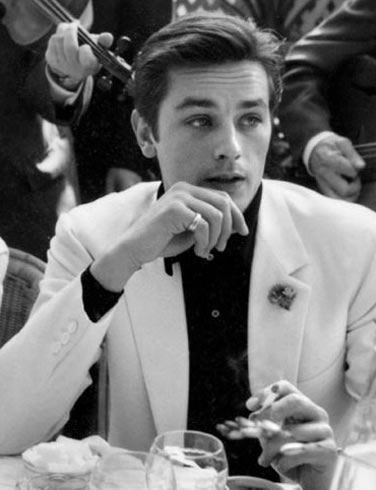
With cheekbones sharp enough to slice silk and eyes full of mystery, Alain Delon lit up European cinema in the 1960s. In films like Purple Noon (1960), Le Samouraï (1967), and La Piscine (1969), he played men who said little—but dressed impeccably. Crisp white shirts, slim-cut suits, Ray-Bans, and Riviera-ready linen made Delon the poster boy for icy elegance. His style was clean, confident, and oh-so-French. Delon didn’t just act cool—he defined it. He remains the blueprint for aloof sophistication in menswear.
12. Jean-Paul Belmondo – The Rebel in a Suit
If Delon was polished, Belmondo was all swagger and cigarette smoke. Bursting onto the scene in Breathless (1960), Belmondo gave the French New Wave its charming rogue. He wore suits like he didn’t care about them, which somehow made them cooler. Trilby hats, loosened ties, wrinkled blazers—it was all part of the Belmondo effect. He brought rugged masculinity to polished style and gave men permission to be both dashing and disheveled. A slouch in his step, a sparkle in his eye—and always the right jacket on.
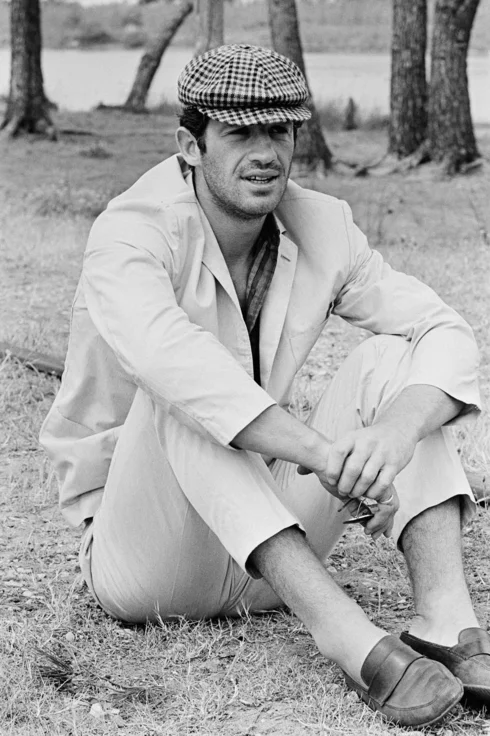
13. Jacques Dutronc – The French Mod with a Guitar and a Wink
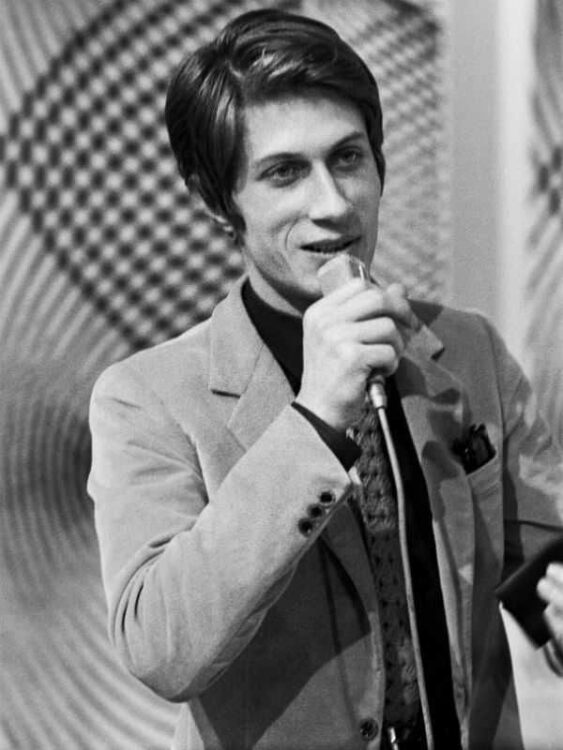
Singer, songwriter, and actor, Jacques Dutronc rode the wave of 1960s French pop with hits like Et moi, et moi, et moi (1966) and Les Cactus. But he didn’t just sound cool—he looked it too. With his turtlenecks, tailored suits, Chelsea boots, and ever-present shades, Dutronc blended mod British influence with Parisian irony. His fashion sense had a smirk: sleek but slightly sardonic, polished but never too serious. He was the guy who dressed like he was in on the joke—and somehow made you want to join him.
14. George Best – Football’s First Style Icon
Before Beckham, there was George Best—football’s original fashion heartthrob. As Manchester United’s dazzling winger, Best won the Ballon d’Or in 1968 and helped secure the European Cup that same year. But off the pitch, he was equally famous for his velvet blazers, floral shirts, shaggy hair, and sideburns. He lived like a rockstar and dressed like one too. Best turned the locker room into a runway and helped kickstart the athlete-as-style-icon era. With charm, talent, and a closet full of mod gear, he really was “El Beatle.”
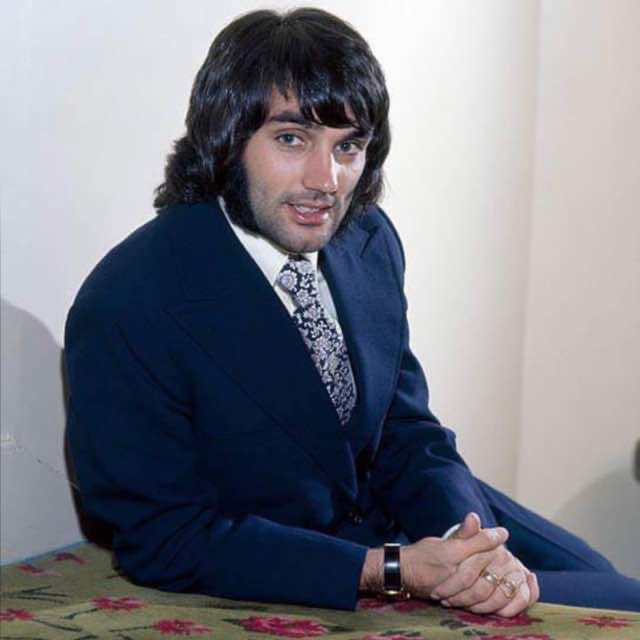
15. Serge Gainsbourg – The Enigmatic Elegance of a Genius
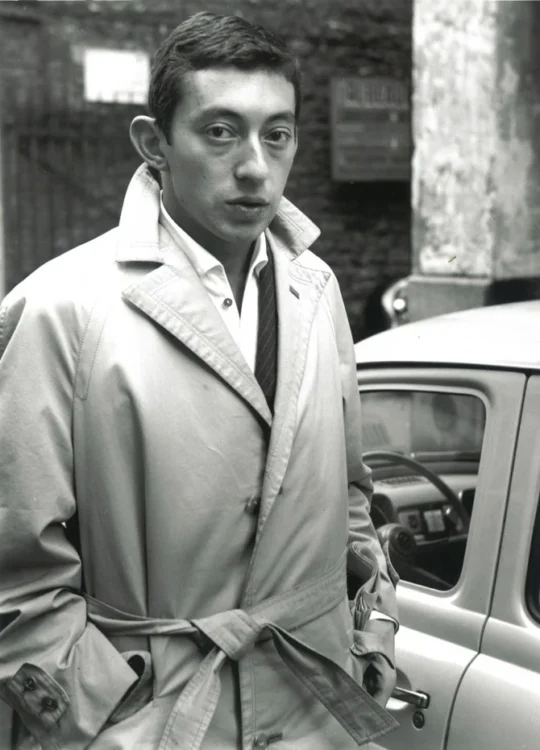
Serge Gainsbourg was a provocateur, a poet, and an unlikely sex symbol. With albums like Histoire de Melody Nelson and controversial hits like Je t’aime… moi non plus, he pushed musical and social boundaries. His wardrobe was no less daring—rumpled blazers, unbuttoned shirts, tight jeans, and perpetual cigarette in hand. Gainsbourg made the undone look seductive. He wasn’t classically handsome, but his louche style reeked of confidence and creativity. Sartorially, he made messiness magnetic—and cool forever smelled a little like Gitanes.
16. John Stephen – The Modfather of Carnaby Street
John Stephen didn’t sing, act, or box—but he dressed the men who did. As the “King of Carnaby Street,” he transformed a dull London strip into the epicenter of 60s men’s fashion. Stephen’s boutiques—like His Clothes and Mod Male—offered slim suits, floral shirts, bold colors, and shorter cuts that defined mod style. He dressed everyone from The Kinks to The Small Faces. While he may not be a household name today, his designs gave working-class kids access to rockstar swagger. Fashion-forward, fearless, and fantastically fun—Stephen stitched the look of Swinging London.
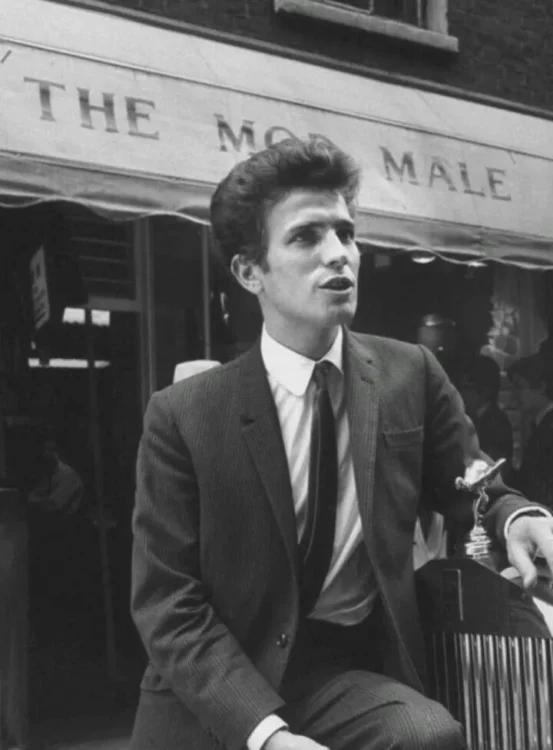
17. Brian Jones – The Dandy of Rock ‘n’ Roll
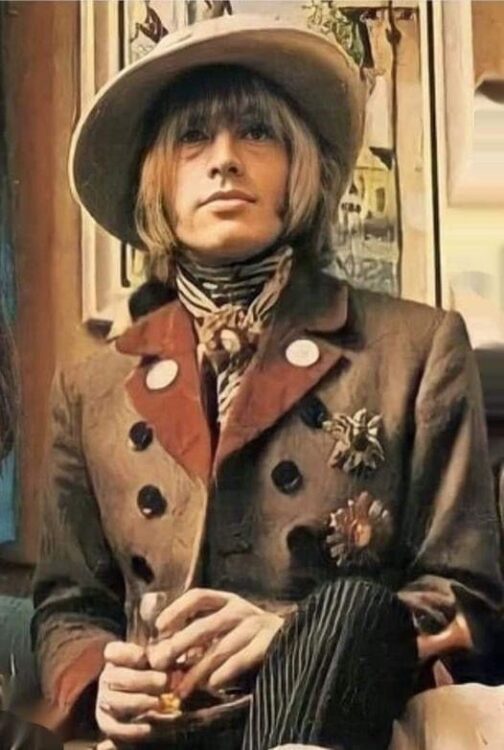
While Mick and Keith played it cool, Brian Jones went for full-blown flamboyance. The original founder of The Rolling Stones, Jones helped launch the band in 1962 and shaped their bluesy aesthetic. But by the late 60s, his musical presence faded—his style, however, soared. He wore paisley, fur, and military jackets like a psychedelic peacock. Think androgynous scarves, floppy hats, and Moroccan robes. Jones dressed like rock royalty before it was a thing. His brief, brilliant flame left behind a blueprint for fashion-forward musicians who wanted to go big.
18. Tom Wolfe – The White-Suited Wordsmith of Cool
Tom Wolfe didn’t just document culture—he wore it. As the pioneer of New Journalism, Wolfe wrote iconic pieces like The Electric Kool-Aid Acid Test (1968) with a voice as vivid as his wardrobe. His trademark white suits, colorful shirts, cravats, and two-tone shoes gave literary circles a jolt of theatrical flair. Wolfe turned the writer into a style figure, making intellect flamboyant and dandyism cerebral. He wasn’t trying to blend in—he refused to. Long before fashion editors became influencers, Wolfe had already made journalism runway-worthy.
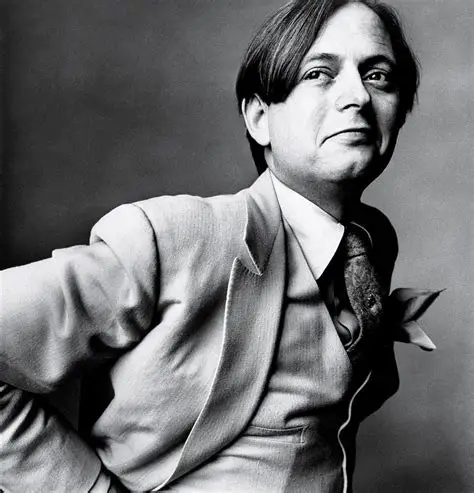
19. Ralph Lauren – The Visionary Who Redefined American Style

Born in 1939, Ralph Lauren didn’t just enter the fashion scene in the 1960s—he reshaped it. Starting with wide, luxurious neckties, he built a brand that would become the epitome of aspirational American style. In the 60s, Lauren’s own wardrobe reflected the preppy sophistication he championed: tailored blazers, Oxford shirts, and a knack for layering that felt both Ivy League and cosmopolitan. He dressed like the world he wanted to create—polished yet approachable, classic yet fresh. Ralph Lauren’s 60s style endures as the blueprint for timeless, all-American elegance.
20. Eric Clapton – The Guitar God with a Cool, Carefree Edge:
Eric Clapton, born in 1945, cemented his legend in the 1960s with The Yardbirds, Cream, and as a virtuoso guitarist whose blues-infused rock defined an era. While his music roared, Clapton’s style whispered effortless cool—slim suits in his early days, evolving into relaxed jackets, open shirts, and tousled hair that mirrored the counterculture’s nonchalance. He wasn’t chasing trends; he embodied them, blending rock star charisma with understated British tailoring. Clapton’s 60s fashion lives on as a lesson in how subtlety can still be utterly magnetic.
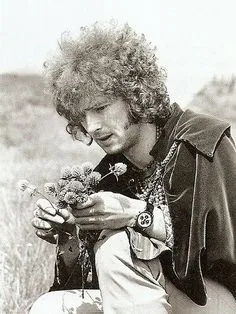
21. Yves Saint Laurent – The Designer Who Dared to Redefine
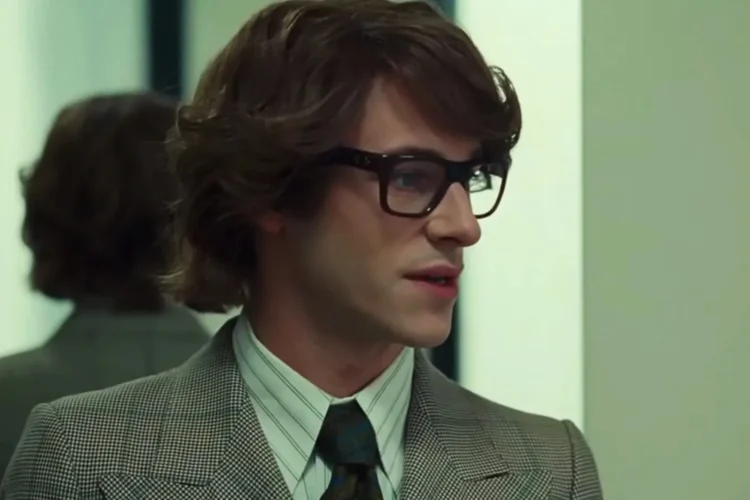
Though most celebrated for revolutionizing women’s fashion, Yves Saint Laurent left an indelible mark on menswear too. In the late 1960s, he debuted his Rive Gauche line for men—introducing safari jackets, see-through shirts, and tuxedos with feminine flair. YSL blurred gender lines with elegance and edge, paving the way for androgynous dressing. While his tailoring was classic, his styling was rebellious. He made Paris the center of fashion risk and refinement. For men who wanted to be daring without losing sophistication, Saint Laurent opened the door—and the runway. image source
22. Kensuke Ishizu – The Ivy League Goes East
A quiet revolutionary, Kensuke Ishizu brought preppy American style to post-war Japan. Founder of VAN Jacket in 1951, he ignited the Ivy League boom in the 1960s—introducing Japanese youth to button-down shirts, chinos, crewnecks, and penny loafers. Through his Men’s Club magazine and fashion guides, Ishizu didn’t just sell clothes—he taught a lifestyle. His crisp, disciplined take on American prep mixed with Japanese minimalism created something wholly new. Today’s global love for clean, collegiate menswear owes much to this visionary who stitched together two worlds. Image source
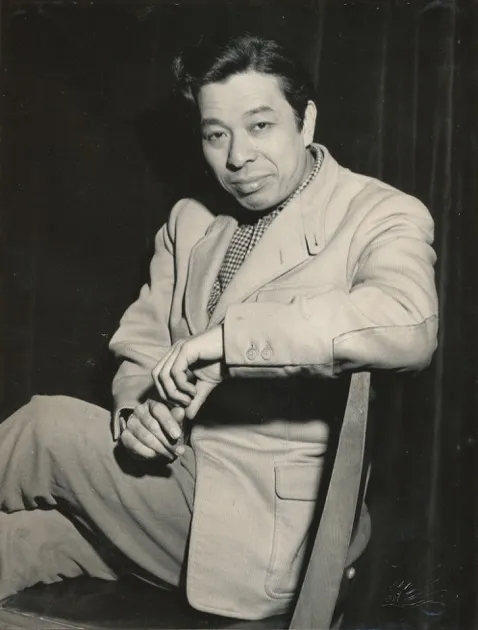
23. Rajesh Khanna – India’s First Superstar, Style Included
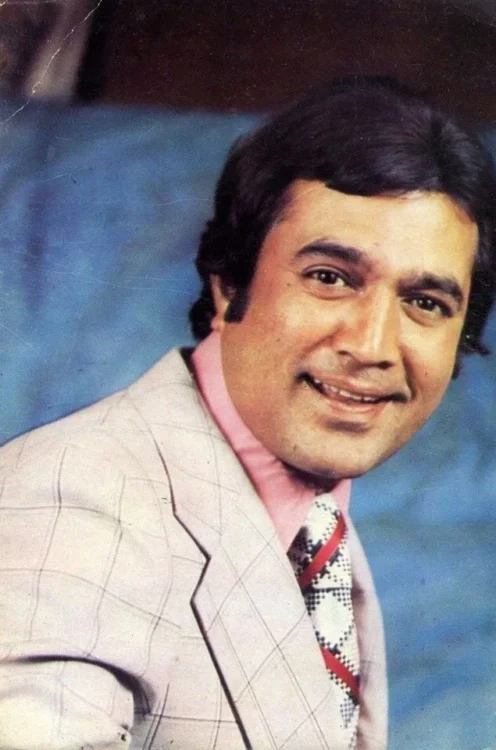
With the rise of Bollywood in the late ’60s, Rajesh Khanna became India’s first cinematic phenomenon—and fashion idol. Films like Aradhana (1969) and Do Raaste (1969) turned him into a household name. But it wasn’t just his romantic screen presence—it was the way he wore guru shirts, wide collars, pastel knits, and those side-swept bangs. He brought soft glamour and emotional warmth to men’s fashion, making expressive dressing fashionable in conservative settings. Rajesh Khanna’s style legacy is stitched into the memory of an entire subcontinent.
24. Marcello Mastroianni – The Gentleman of Italian Cinema
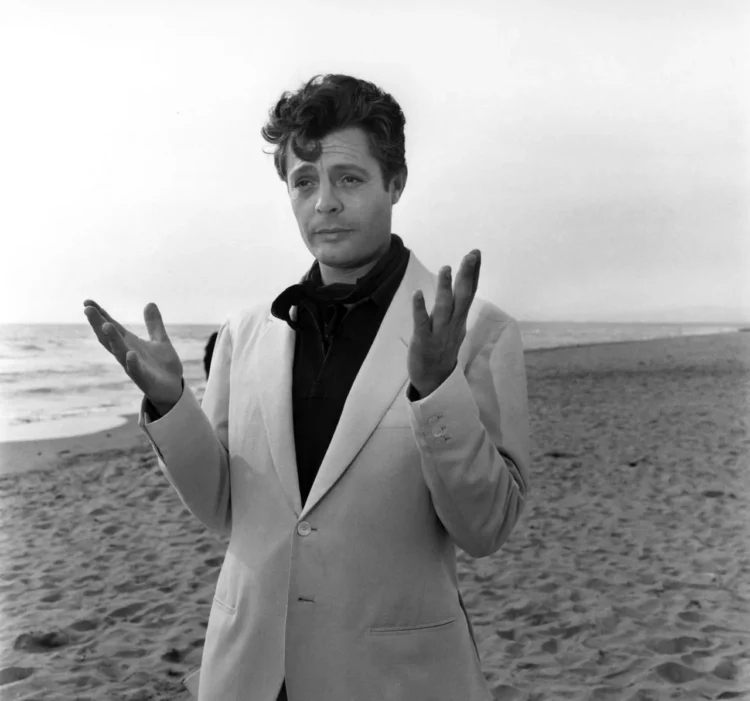
Smooth, soulful, and impeccably dressed—Marcello Mastroianni made existential angst look elegant. With unforgettable roles in La Dolce Vita (1960) and 8½ (1963), he became the face of Federico Fellini’s dreamy, stylish Rome. On-screen and off, Mastroianni favored understated suits, soft scarves, and thick-framed glasses. He oozed Mediterranean charm without trying too hard. While others flaunted, he finessed. He didn’t chase trends—he wore timeless tailoring with a wink and a cigarette. Mastroianni made us believe you could look world-weary and wonderful at the same time.
25. Roberto Carlos – The Crooner with Romantic Flair
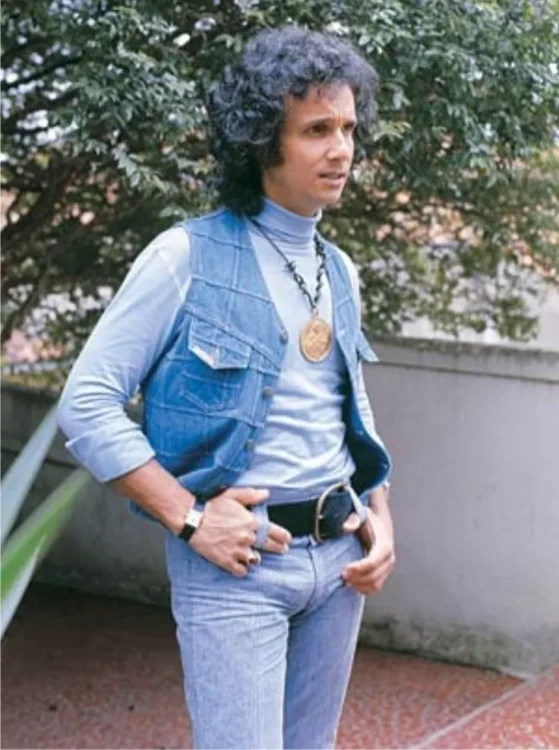
Long before his name became synonymous with football, Roberto Carlos the Brazilian singer was stealing hearts with his velvety voice and stylish presence. Leading the Jovem Guarda (Young Guard) movement in the 1960s, he gave Brazil its own rock ’n’ roll revolution. His fashion reflected his sound—part Elvis, part Latin lover: fitted jackets, skinny ties, floral shirts, and perfectly coiffed hair. He brought modern flair to Brazil’s traditional elegance, influencing generations of pop stars. In Brazil, Roberto Carlos wasn’t just a singer—he was the man you wanted to sing and dress like.
From rock gods to rebel poets, silver screen charmers to street-style pioneers, the men of the swinging ’60s didn’t just wear fashion—they became it. Their style told stories, broke rules, and left blueprints. Decades later, their influence still lingers—in every sharp suit, tousled hair, and fearless fashion choice we dare today.
If you’re curious about the most stylish men of the 1950s, this list is sure to captivate you.
